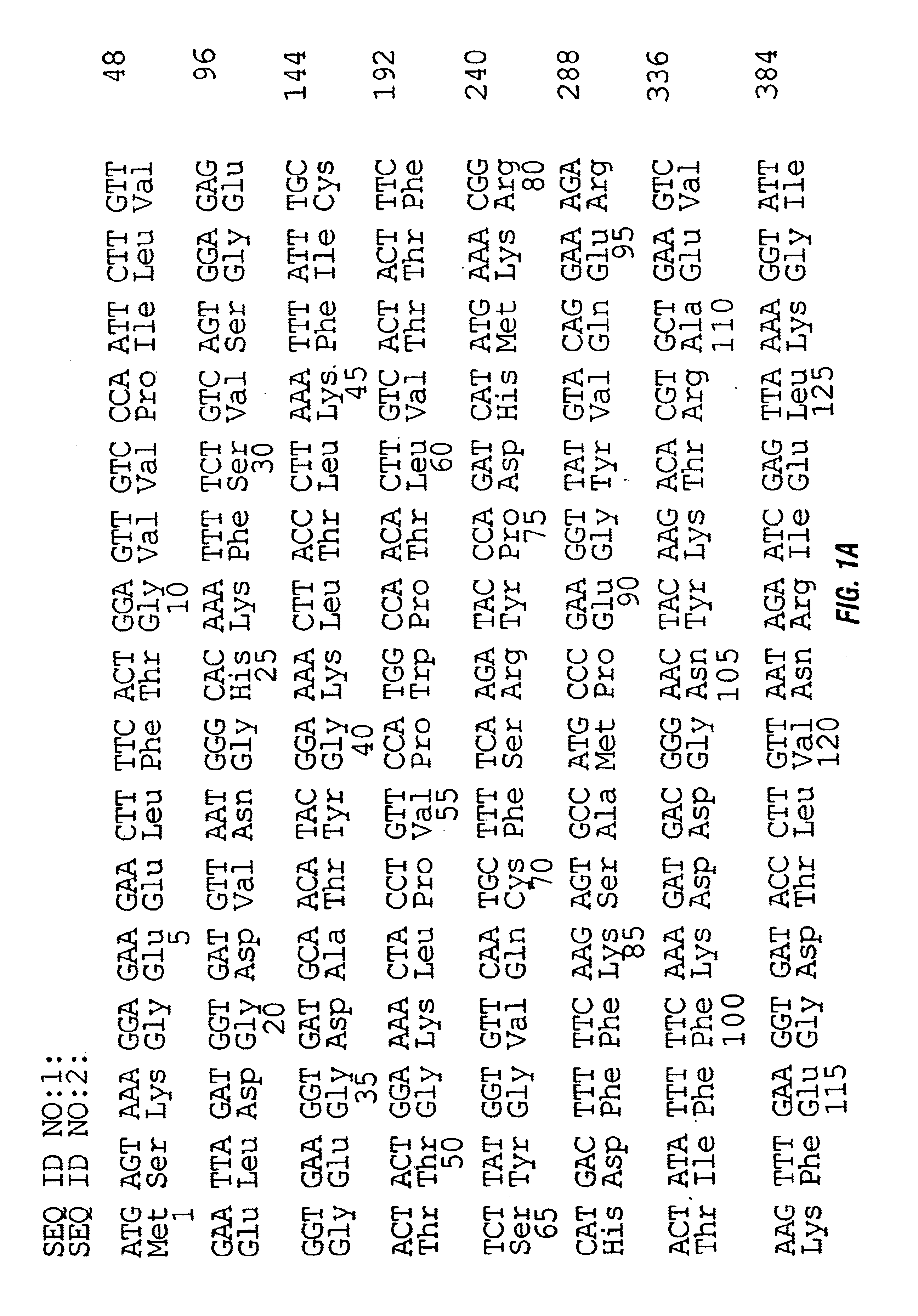Tandem fluorescent protein constructs
a technology of fluorescent protein and construct, which is applied in the field of tandem fluorescent protein construct, can solve the problems of insufficient fret for accurate measurements, too many sites vulnerable to attack, and protein moieties may sterically interfere with each other's folding
- Summary
- Abstract
- Description
- Claims
- Application Information
AI Technical Summary
Problems solved by technology
Method used
Image
Examples
Embodiment Construction
Mutant Green Fluorescent Proteins were created as follows. Random mutagenesis of the Aequorea green fluorescent protein (FIG. 1) was performed by increasing the error rate of the PCR with 0.1 mM MnCl.sub.2 and unbalanced nucleotide concentrations. The templates used for PCR encoded the GFP mutants S65T, Y66H and Y66W. They had been cloned into the BamHl site of the expression vector PRSETB (Invitrogen), which includes a T7 promoter and a polyhistidine tag. The GFP coding region (shown in bold) was flanked by the following 5' and 3' sequences: 5'-G GAT CCC CCC GCT GAA TTC ATG (SEQ ID NO:19) . . . AAA TAA TAA GGA TCC (SEQ ID NO:20) -3'. The 5' primer for the mutagenic PCR was the T7 primer matching the vector sequence; the 3' primer was 5'-GGT AAG CTT TTA TTT GTA TAG TTC ATC CAT GCC-3' (SEQ ID NO:21), specific for the 3' end of GFP, creating a HindIII restriction site next to the stop codon.
Amplification was over 25 cycles (1 min at 94.degree. C., 1 min 52.degree. C., 1 min 72.degree....
PUM
| Property | Measurement | Unit |
|---|---|---|
| Length | aaaaa | aaaaa |
| Length | aaaaa | aaaaa |
| Fraction | aaaaa | aaaaa |
Abstract
Description
Claims
Application Information
 Login to View More
Login to View More - R&D
- Intellectual Property
- Life Sciences
- Materials
- Tech Scout
- Unparalleled Data Quality
- Higher Quality Content
- 60% Fewer Hallucinations
Browse by: Latest US Patents, China's latest patents, Technical Efficacy Thesaurus, Application Domain, Technology Topic, Popular Technical Reports.
© 2025 PatSnap. All rights reserved.Legal|Privacy policy|Modern Slavery Act Transparency Statement|Sitemap|About US| Contact US: help@patsnap.com



